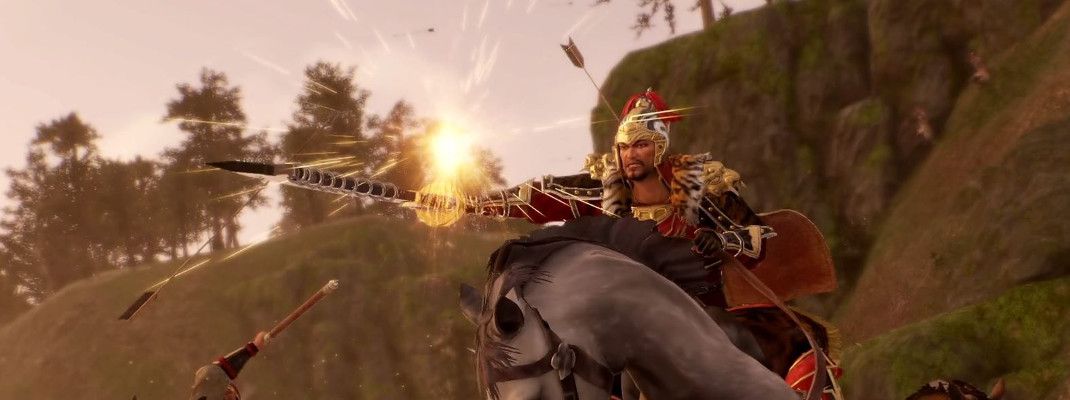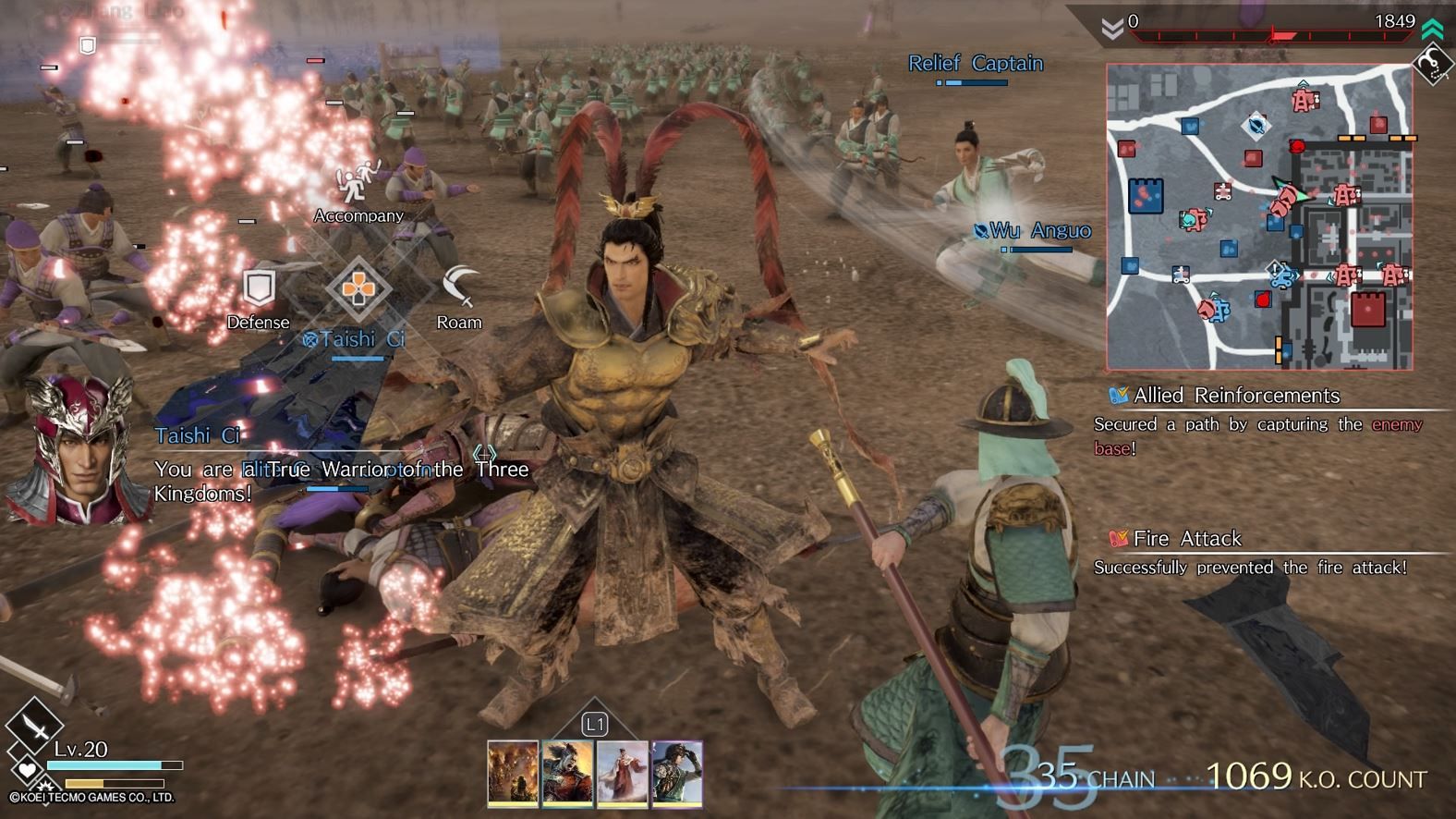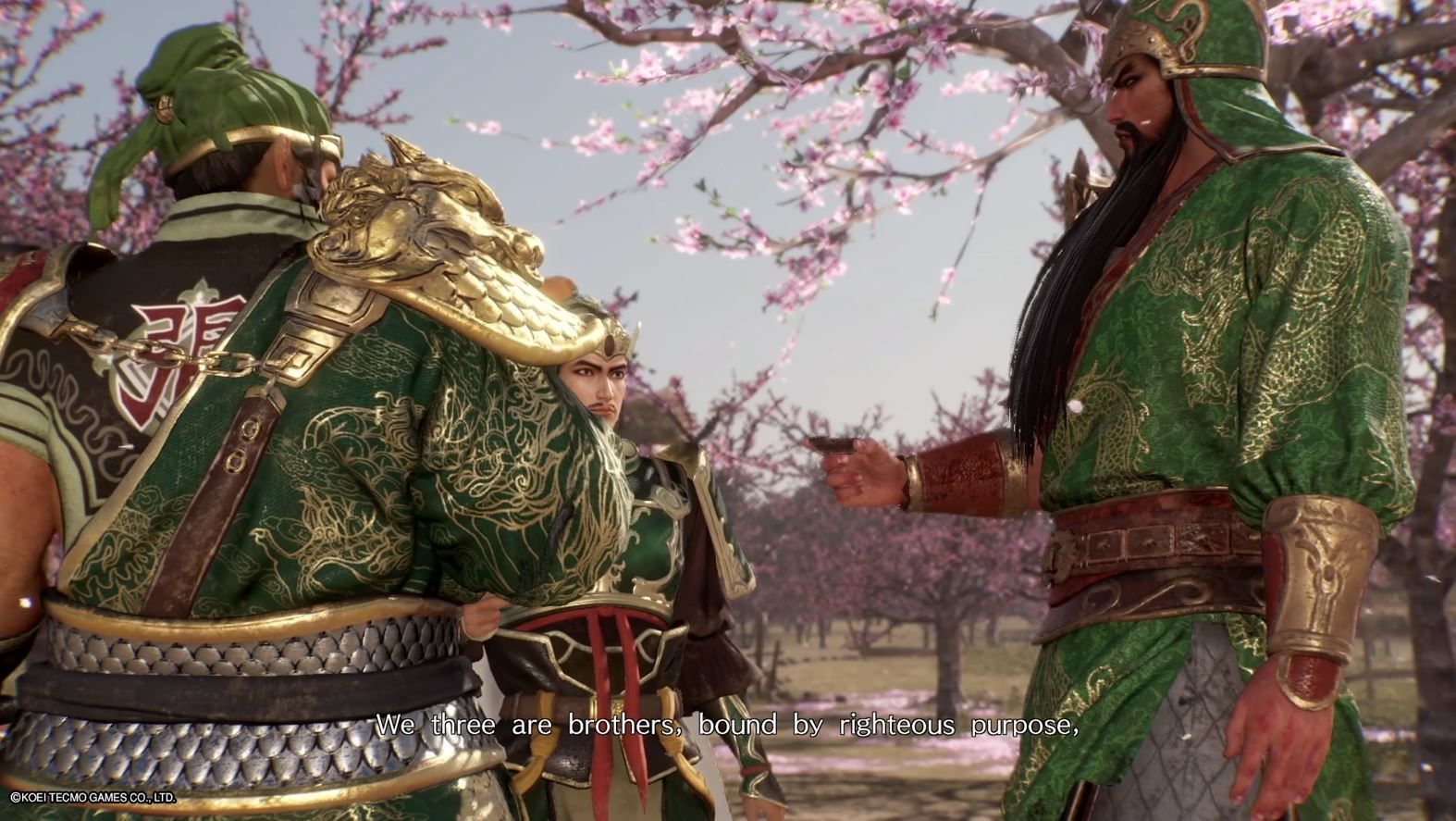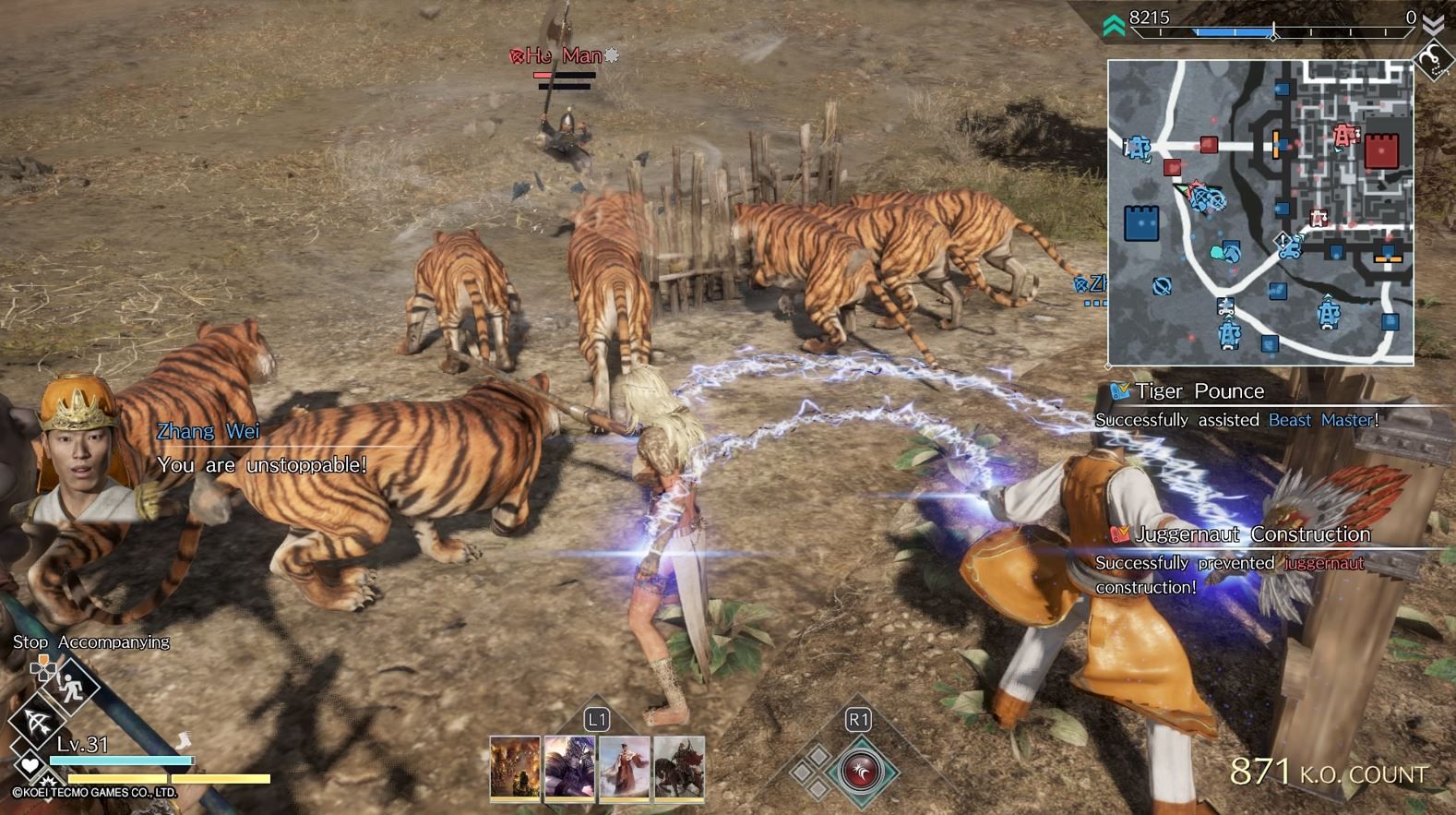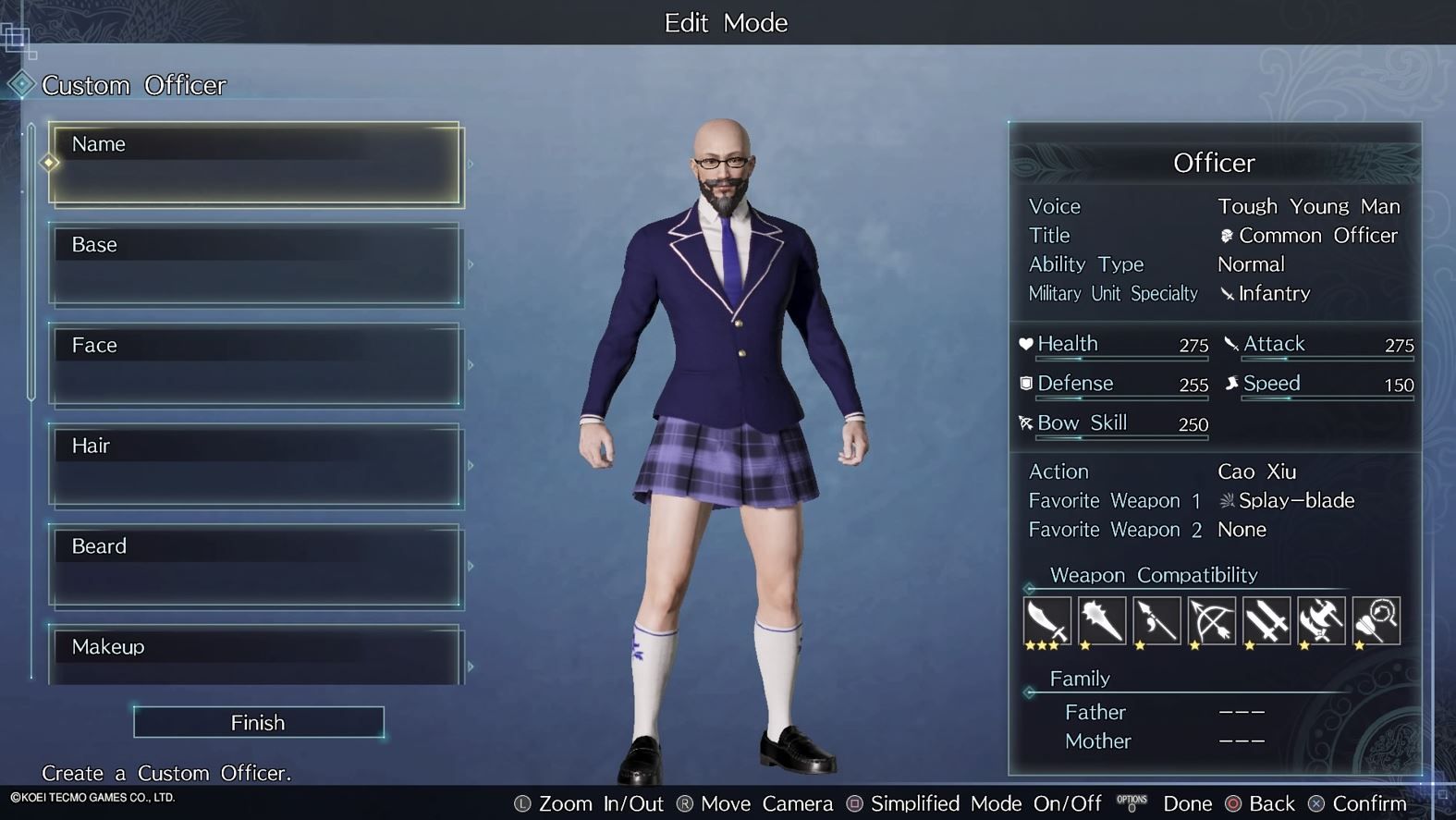Dynasty Warriors has not done any major changes to its formula since Dynasty Warriors 2 first appeared on PlayStation 2. There’s been some experimentation such as adding an open world in Dynasty Warriors 9 or making the story mode be tied to a kingdom instead of a specific officer in Dynasty Warriors 4. There’s been some attempts to branch out from the main stories with Xtreme Legends games or adding a more strategic element with Empires, but regardless of what changes are made it still comes down to one officer facing off against an army of thousands in hack and slash mayhem. Omega Force may never be mentioned among the great innovators in the industry, but as long as the Musou fans keep enjoying the games their approach is likely not going to change any time soon.
Despite what the title may suggest, Dynasty Warriors 9 Empires is a standalone game, separate from Dynasty Warriors 9 despite sharing character and environment assets (and the general story, but that can be said of any Dynasty Warriors game). As is tradition the events take place starting in the later years of the Han dynasty in China leading into the beginning of the Three Kingdoms era. Like other Empires titles Dynasty Warriors 9 Empires has the player selecting a character who will help unify the land. While the player can switch who they control in battle from available officers in their territory, who they choose at the beginning does have an impact on how the game will progress. Selecting someone like Cao Cao will put the player in charge of running the kingdom, making every decision and determining when to invade and acquire new land. Choosing Guan Yu for example will have the player be a general serving under Liu Bei, and will be able to choose what actions to take will need to move up the ranks before they can make major military decisions. Going with an unaffiliated vagrant character like someone made in Edit mode will have no kingdom, and they'll need to recruit allies and gain power before conquering their first territory.
When beginning a new game the player must select which scenario they want to experience. Many iconic battles from the Three Kingdoms are there to choose from, such as the Yellow Turban Rebellion and Battle of Chibi. Each scenario gets played essentially the same way, but there are differences in each of them. Which officers are in what position and readily available vary to match up with the canon Three Kingdoms story and certain events will naturally only be available in the appropriate setting. In the coalition against Dong Zhuo, Yuan Shao will invite the player to take part in the battle against Dong Zhuo where they are joined by Cao Cao, Sun Jian and Liu Bei. There are also cutscenes that occur to showcase major events that happen during the appropriate year that players may not have any direct involvement, such as the death of prominent figures. These inclusions are nice for those familiar with the Three Kingdoms. The player may be forging their own path and not necessarily following history, but the game acknowledges these events.
One of the things about empire building is establishing relationships with other warriors which does factor into kingdom growth. Players can form alliances with rival generals and work on strengthening bonds with other officers in their kingdom. Getting on the ruler's good side can lead to perks such as receiving gifts after performing well in battle. Maxing out the bond level with other officers can lead to becoming sworn brothers or if the characters are of different genders can lead to matrimony. Having a wed pair of warriors survive the final battle in the unification of the land can lead to having a child that has a mix of characteristics inherited from their parents.
Battles are what Dynasty Warriors games are known for, but the Empires titles put more emphasis on planning during the months in between skirmishes. During each month the player is free to do a number of things to help the kingdom grow. This isn’t an exhaustive list, but these activities include going on strolls to recruit new officers, increasing agricultural production, bribing enemy generals or pillage their own territory for money and resources. These decisions also help shape the player’s reputation which is measured on across several different attribute scores. The ruler will determine which activities are to be prioritized during each six month war council. If the player is the ruler they can choose which items are the focal point, otherwise the CPU will determine what should be done to increase merit bonuses. Of course, the player is free to ignore these directions and do whatever activity they wish. Aside from walking around when someone joins you on a stroll all these events are simply done through text windows after clicking on a menu.
Battles can be fought either as invasion or defense. If an enemy invades one of the player’s territories the player can choose to fight off the invasion or decide that there are more pressing matters to attend to, such as going on a stroll. If the player chooses not to fight off the invasion, if the targeted territory has a high enough defense it will suffer a loss to the defense and the officers will lose soldiers but the territory may be kept, provided the defense level after the invasion is above zero. If the result of the invasion knocks the defense below zero that particular territory is lost, so sometimes it's advisable to step in and defend your land. The targeted invasion territory is determined at the start of each war council. During the last month that area will be invaded, and if the player participates in the invasion and wins the battle they take over that province. Depending on player rank, the player can also choose to invade any adjacent province in any month in lieu of another kingdom-building task, but doing that too often can put the player at a disadvantage later when resources and troop numbers are low and a much more powerful general decides to invade.
The open-world format of Dynasty Warriors 9 was not something that was continued into this empire. The fights occur in self-contained battlefields and while the objective is to either defend or conquer the castle, there are formulaic approaches to each fight. Secret Plans are an important part of combat and these occur in a couple different ways. Killing plan captains can prevent the opposing army from initiating their plan and protecting your plan captains will allow your army to successfully pull these off. These plans take on a variety of forms like summoning a giant flaming tiger or creating lightning storms on the battlefield. Each officer can also be equipped with four different Secret Plans that act as special attacks with a cool down period. A couple of these myriad attacks include an incineration attack that's great for crowd control or a gradual healing buff.
Aside from those changes, battle in Dynasty Warriors 9 Empires doesn't look too different than any of the other previous games. The specific objective might vary from scenario to scenario, but the main thing is rack up a ridiculously high kill count while not letting the commanding officer get killed. Capturing bases and taking out defense captains so battering rams and siege towers can do their thing is an important part of that, but for better or worse battles play out feeling the same as every other Dynasty Warriors game.
Officer Edit mode returns and allows the player the opportunity to take their favorite character's fighting style and add a male or female character of their own design. Most of the costume designs are patterned after the normal officer clothing styles of the game, but there are some anachronistic approaches like eyeglasses (generally believed to be a 13th century invention) and suits and ties (exact date origin unknown, but generally believed to be later than 3rd century). It doesn't offer a huge advantage to design one's own character, but it is a fun inclusion. There are two different options for visual performance: one prioritizes framerate and the other resolution. During the review both were used and no major differences were noted in performance. This is a franchise that's notorious for slowdown and draw distance issues, but on single player neither of these occurred during the review. Online campaign co-op is supported, but local multiplayer is not which is a shame as these games are most enjoyable with a friend.
Closing Comments:
Dynasty Warriors 9 Empires brings new gameplay features to the table, but remains the same Three Kingdoms era slaughter fest fans have been enjoying the past twenty years. More of the same has been always been what this franchise was about and that's exactly what this title delivers. To call it strategic is a loose use of the term, but compared to how mindless the mainline games can be, this is the more cerebral title. Watching one's empire grow is a nice aspect, but it's done in a rather shallow way so it's difficult to get too excited about it. The return to smaller battlefields away from the open-world approach is a step in the right direction, but every battle feels formulaic. Even with the individual differences in objective and battlefield events the exact same formula can be applied in each battle which can get too repetitive. But in spite of these criticisms, Dynasty Warriors 9 Empires still delivers the type of experience fans have come to expect, and while it doesn't do much to to distinguish itself from the previous entries, it can still be a lot of fun for those who still enjoy the one-versus-a-thousand style game.

